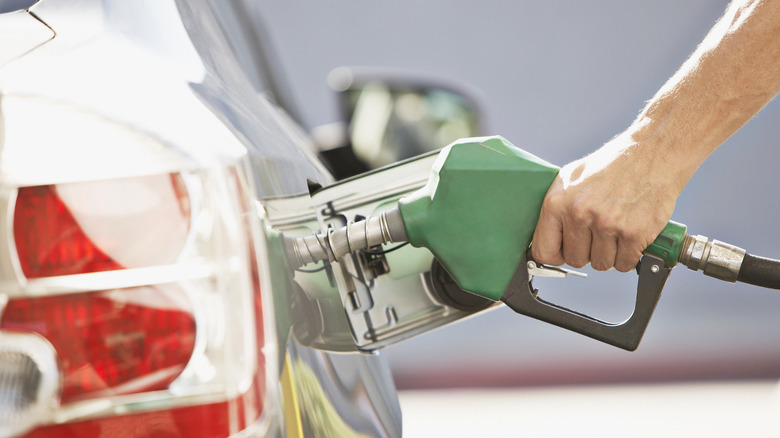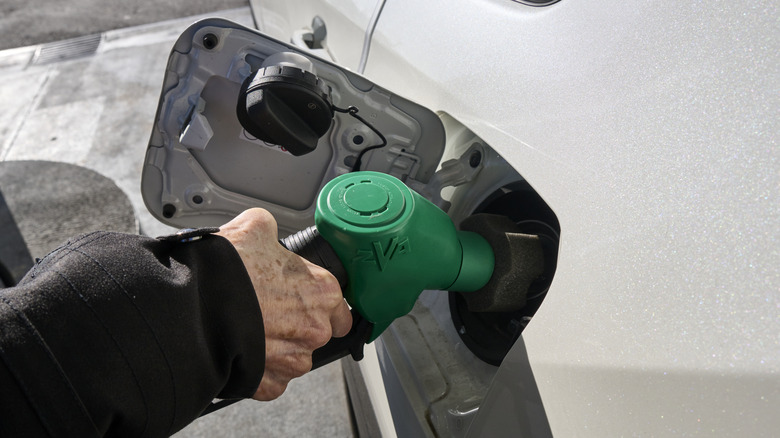The Simple Yet Clever Way Gas Pump Handles Shut Themselves Off
There are a lot of mysteries of modern life that many of us just can't fathom. On diving into them, though, it turns out that things are rather simpler than they seemed. Rewinding live TV, for instance, isn't the impossible exercise in time travel that those new to the technology believe it to be. By the same token, there's no great secret to the magic of pump handles.
Of all the high-tech devices we interact with over the course of our everyday lives (installing a home EV charging station not being a viable option for many), the humble gas pump in particular doesn't seem very special. It's a means to an end for millions of drivers, and a source of significant expense to boot. Nonetheless, there are some surprising mechanisms at work within them. A simple element known as a venturi pipe is the key to the gas pump shutting off when your tank is full.
Fuel is delivered to gas stations by tankers and then stored underground until it is pumped by the customer. The act of pumping is made a simple hold-on-and-release-off affair thanks to the venturi pipe.
What is a venturi pipe and how does it shut the pump off?
Gas pumps are not quite universal. Some models have a switch the user must activate after removing it from the dispenser, while this is an automatic process with others. Those who don't always fill their tanks to full may not really have registered it, but the pump is not designed to simply dispense until overfilling. This is important to know for those who prioritize a vehicle's full-tank range.
To prevent this, a venturi tube, parallel to the main tube of the pump, stops the gas. The pump is reliant on air pressure, and that very pressure is cut when the flow reaches and fills the venturi. With a venturi simply amounting to a short length of tubing with an element that regulates the fluid flow, it's a surprisingly low-tech solution to a potentially very troublesome issue.
This mechanism, however, isn't infallible. There's a bit of an art to pumping gas, and that's because an irregular flow can cause this mechanism to activate before the customer is finished. It's crucial that little tube is there, though, because filling beyond capacity risks harm to the Evaporative Emission System, which is there to regulate the remnants of a vehicle's gas.

